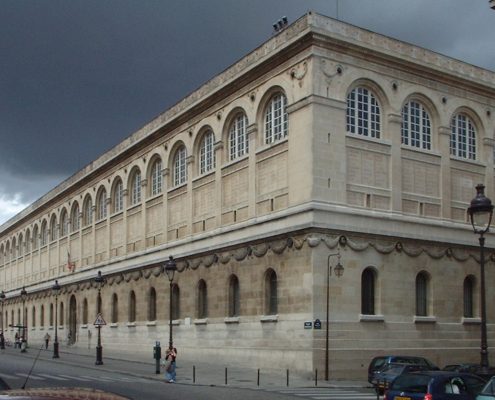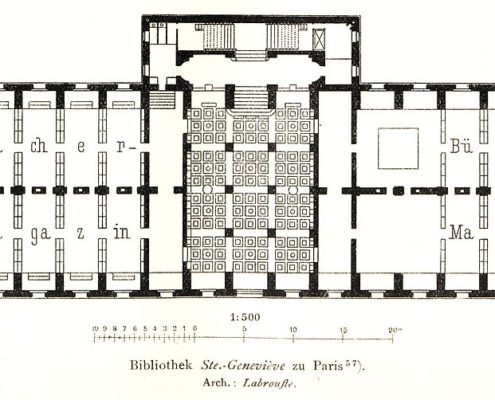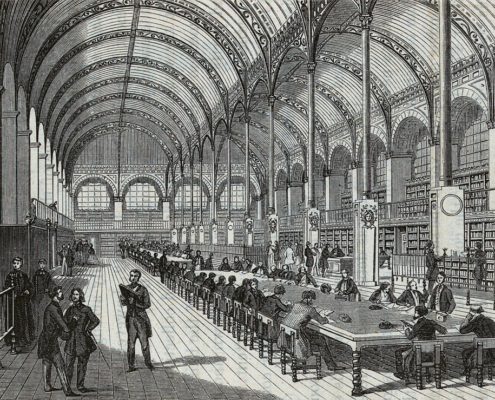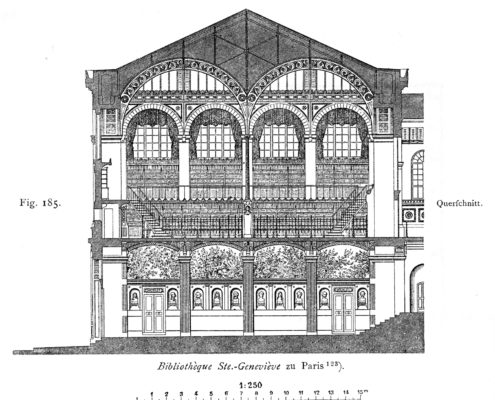"One of the greatest cultural buildings of the nineteenth century to use iron in a prominent, visible way was unquestionably the Bibliotheque Ste.-Genevieve in Paris, designed by Henri Labrouste and built in 1842-50. The large (278 by 69 feet) two-storied structure filling a wide, shallow site is deceptively simple in scheme: the lower floor is occupied by stacks to the left, rare-book storage and office space to the right, with a central vestibule and stairway leading to the reading room which fills the entire upper story. The ferrous structure of this reading room—a spine of slender, cast-iron Ionic columns dividing the space into twin aisles and supporting openwork iron arches that carry barrel vaults of plaster reinforced by iron mesh—has always been revered by Modernists for its introduction of high technology into a monumental building."
Information provided in part by: Architecture: from Prehistory to Post-Modernism






